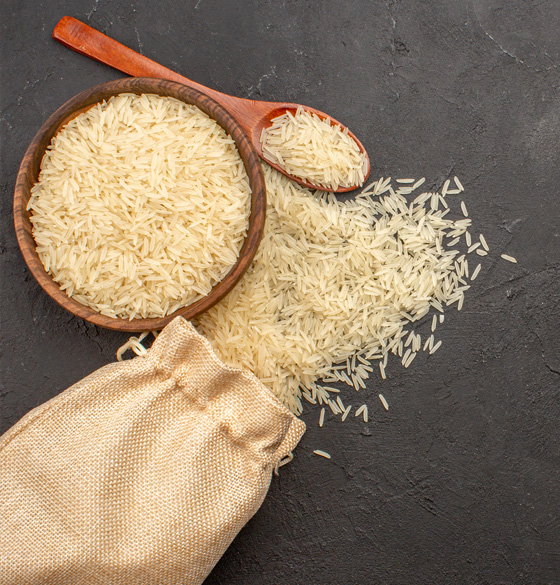How it works
Rice (oryza sativa) is the seed of a cereal grass. It's one of the most important dietary carbohydrates in the world, with over half the global population depending on it. Typically boiled or steamed, rice can also be ground into a gluten-free flour.
- White rice has had the fibre-rich outer bran of the grain removed along-with the nutrient-rich germ.
- Brown rice, on the other hand, contains both the bran and germ, making it nutrient- and fibre-rich and retains a nutty flavour.
- Brown rice is more beneficial. This is due to brown rice containing the husk, which is where most of the nutrients are found.
- The traditional method for cultivating rice is flooding the fields while, or after, setting the young seedlings. This simple method requires sound irrigation planning but reduces the growth of less robust weed and pest plants that have no submerged growth state, and deters vermin.
Benifits of
Rice
Natural Anti-Inflammatory and Gluten Free- If you have any sensitivities to gluten, then rice can easily be added into your diet without worry. Because it is gluten-free, there won't be inflammation in your gut. It is important to always look for ways to reduce inflammation throughout our bodies, and this is why rice is a great feature for any diet.
Good Source of Energy- Our bodies rely on a good amount of carbohydrates to act as fuel. When carbohydrates enter our systems, our bodies work to transform those good carbohydrates into energy. But the healthy carbohydrates found in rice aren't only good for turning into energy.
Prevents Obesity - Rice has low amounts of sodium, fat, and cholesterol, it is a great aid in reducing obesity. It's rich in nutrients and has no significant negative impacts on a person's health. Of course, its high-levels in fiber also help to reduce obesity.




